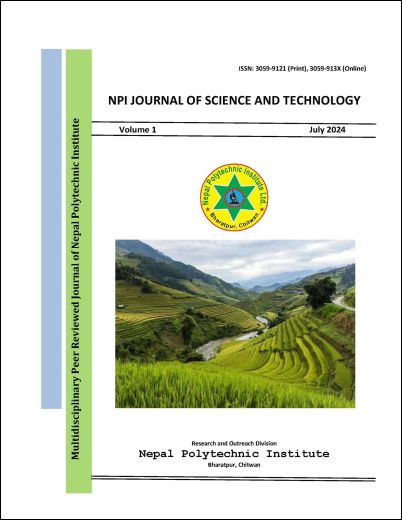History, Present Status and Prospect of Veterinary Education in Nepal
DOI:
https://doi.org/10.3126/npijst.v1i1.68952Keywords:
Veterinary Education, Livestock, Veterinary Services, MunicipalityAbstract
Nepal is an agricultural country. About 62 % of total population depends on agriculture for their livelihood and employment. Agriculture contributes about 33% of national GDP and 25 % of which is contributed by livestock sector. In order to get maximum benefits from livestock sector, good management practices and health care aspect are the crucial parts which could be achieved by quality veterinary services from veterinary professionals and veterinarian. There are only 4 educational institutions in Nepal which offer veterinary education specially B V Sc and A H course. They enroll 196 students per year. Till March 2024, there is 1982 NVC registered veterinarian in Nepal out of which nearly 25 % are living abroad. NVC is the authorized statutory body of Nepal government which formulates quality standard of veterinary educational establishment, licensing of veterinarians and impose code of conduct of veterinarians for veterinary services. There is increasing scope of veterinary services in Nepal but existing number of veterinarians is very low compared to total livestock heads and pet population. Small number of veterinarians has difficult to provide quality services personally to the farm animals and pets. So, all educational institutions and other stakeholders should think about the production of adequate number of qualified veterinary graduates in order to fulfill the need of the nation.
Downloads
Downloads
Published
How to Cite
Issue
Section
License
All rights reserved. No part of this publication may be reproduced, distributed, or transmitted in any form or by any means, including photocopying, recording, or other electronic or mechanical methods, without the prior written permission of the publisher, except in the case of brief quotations embodied in critical reviews and certain other non-commercial uses permitted by copyright law.




